TAGGED AS: HBO, Horror, television, TV, Video Games
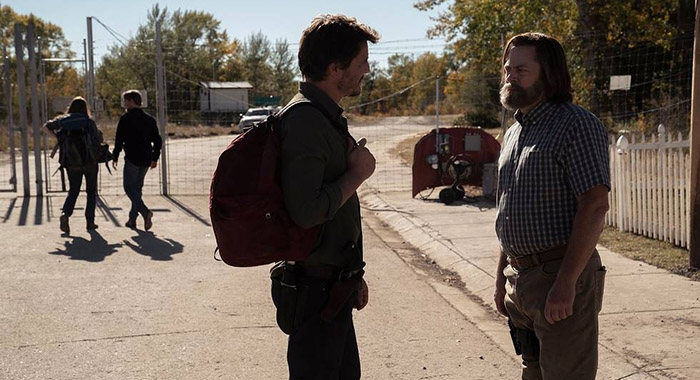
(Photo by Liane Hentscher/HBO)
As The Last of Us’ second episode lurches toward its gut-wrenching conclusion, seconds before Tess (Anna Torv) makes the ultimate sacrifice, she begs Joel (Pedro Pascal) to bring Ellie (Bella Ramsey) to Bill and Frank’s. In that moment, these names mean nothing to newcomers of the franchise. And, in fact, given the emotional intensity of the scene, you could be forgiven for entirely forgetting the pair were even mentioned.
But fans who previously played through the game know Bill is an old acquaintance of Joel’s or, as he gruffly describes him to Ellie, “A fella that owes me some favors.” Frank, on the other hand, is more of a mystery, “a partner” of Bill’s who we never see alive in the game.
The series’ third episode, titled “Long, Long Time,” doesn’t just fill in the blanks on Frank and his relationship with Bill, but does so via an incredibly thoughtful, nuanced love story that’ll no doubt be remembered come awards’ season.
Spoiler alert: The following contains details about The Last of Us season 2, episode 3, “Long, Long Time.” Stop here if you have not watched the episode and want to avoid spoilers.
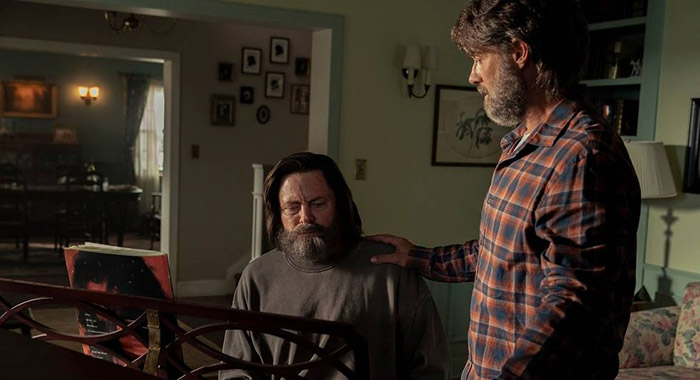
(Photo by Liane Hentscher/HBO)
Episode 3 focuses almost entirely on Bill (Nick Offerman) and Frank (Murray Bartlett). We discover how they meet, fall in love, grow old together, and ultimately die – happily, on their own terms – in each other’s arms. It’s a moving, emotional, surprisingly romantic story arc that seems quite a far cry from the game’s take on the same relationship.
And while the episode indeed marks a significant departure from the game, investing nearly an hour fleshing out a side story that’s barely hinted at in the source material, the two versions of Bill and Frank’s tale aren’t quite as different as they first appear. In fact, upon closer inspection of two key scenes – one from the show, one from the game – you can begin to appreciate how both stories not only began on the same path, but could have just as easily continued down it to reach identical conclusions.
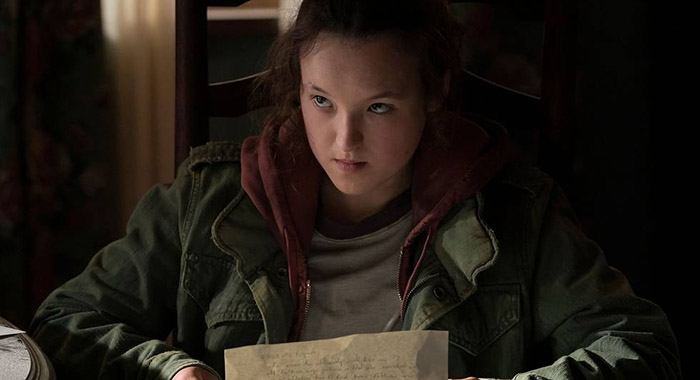
(Photo by Liane Hentscher/HBO)
In the game, there seems to be no love lost between Bill and Frank. Their romance is never directly referenced and, outside of a brief exchange with Joel – where Bill speaks of a partner he once cared for and protected – he rarely has a kind word to say about Frank. And the feeling is mutual, as Frank, who chose to hang himself after being infected, leaves an especially nasty suicide note for Bill.
But it’s that very note that all but references a pivotal scene in the episode, a scene that, obviously, doesn’t exist in the game. Among several nasty jabs, including, “I hated your guts,” the letter reads, “I grew tired of this shitty town and your set-in-your-ways attitude. I wanted more from life than this and you could never get that.”
With the benefit of hindsight, it’s now impossible to read that note and not recall the couple’s argument from the show. In the episode, three years into their relationship, Frank storms from the house. He craves more from life – he wants to fix up the neighborhood, make new friends, and not merely survive, but thrive in this new, post-apocalyptic normal. He even threatens, albeit sarcastically, to sacrifice himself to one of Bill’s traps. Bill reluctantly concedes, but had the hardcore survivalist stood his ground, we could totally imagine Frank leaving him, penning the angry goodbye, and meeting the same grim demise he does in the game.
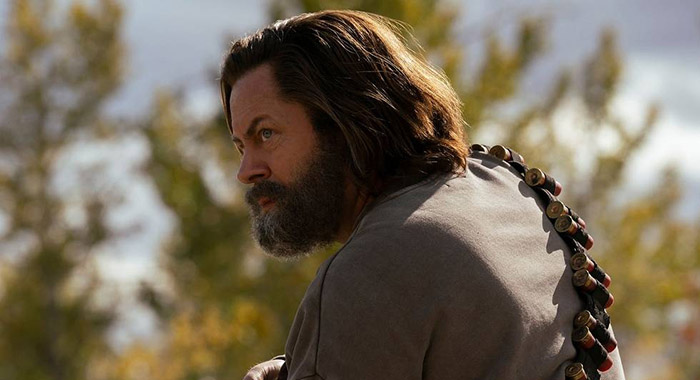
(Photo by Liane Hentscher/HBO)
Similarly, if you’ve just played through the “Bill’s Town” chapter of the game before watching the episode, you might watch the argument unfold with bated breath, wondering if it will ultimately lead to a pissed-off, infected Frank hanging from a rope. Conversely, if the game’s angry letter was fueled by the same – though unseen – argument, but the feud played out as it does in the show, we could see ourselves searching for car batteries and fighting Bloaters not just alongside Bill, but tackling these very video game-y objectives with Frank also in tow. In fact, if Naughty Dog wants to start working on that alternate-history expansion, we’d love to play it. How rad would it be to see an in-game Frank bashing infected with a broken bottle of fine wine?
Of course, this is all made more intriguing by the fact that the note is an in-game “artifact,” an optional, lore-building collectible you could totally miss. Additionally, you have the choice, as Joel, to share the letter with Bill or keep it a secret.
The episode is easily the series’ best yet, one that’ll deservedly be hailed as a major departure from the game that changed the story for the better. And that’s before you breach the bigger, overarching themes, like Bill’s positive transformation possibly shaping Joel’s outlook and his relationship with Ellie. But at the same time, it’s incredibly cool that all the puzzle pieces were in place for the series’ narrative to more closely mirror the game’s version of events and vice versa.
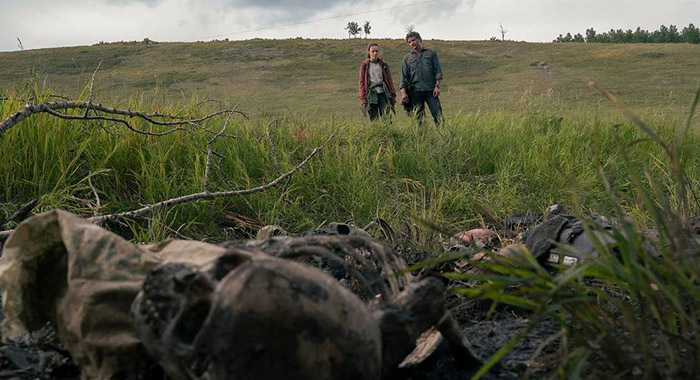
(Photo by Liane Hentscher/HBO)
These creative collisions between game and series aren’t just limited to Bill and Frank’s love story. In the former, Ellie is consistently scolded by Bill for touching his personal items, while in the latter she’s frequently bugging Joel to let her carry a firearm. These two separate threads ironically collide when, in the show, Ellie finally gets her gun – unbeknownst to Joel – while snooping through the now-deceased Bill’s home. Prior to this, she also breaks his grandfather clock, an offense that would have spiked game-Bill’s blood pressure beyond any doctor recommended level.
The episode also contains some more traditional Easter eggs, including Ellie discovering an old Mortal Kombat II arcade cabinet in a convenience store. In the source material, the coin-op is a fictional game called “The Turning,” but Ellie’s enthusiasm and gory gameplay description is similar. The episode also closes with an interior shot of Bill and Frank’s bedroom window, a familiar image – complete with windswept curtains – that faithful fans will recognize from the game’s main menu screen.
Through the lens of Ellie’s curiosity, the show continues to shed light on the Cordyceps virus’ origins. Joel explains to her that it was initially spread through the food supply, specifically mass-consumed ingredients, like flour and sugar. This is also hinted at in the second episode’s prologue, when the Mycology professor (Christine Hakim) learns the first victim worked at a flour and grain factory. Joel goes on to call out specific foods, such as bread, cereal, and pancake mix, that would have kicked off the pandemic before it was further spread by aggressive infected biting others.
Of course, this explanation recalls the premiere episode, where Joel and Sarah not only narrowly avoid enjoying a pancake breakfast, but also conveniently evade cake, cookies, and biscuits throughout the day leading up to the outbreak.
![]() 96%
The Last of Us: Season 1
(2023)
new episodes air on Sundays on HBO and HBO Max.
96%
The Last of Us: Season 1
(2023)
new episodes air on Sundays on HBO and HBO Max.